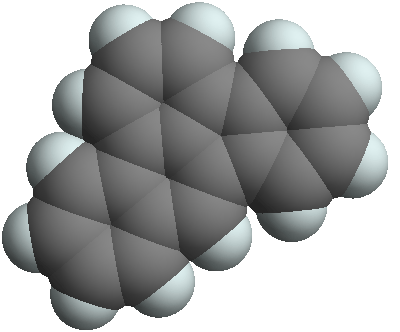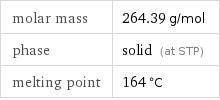Input interpretation
![benzo[b]fluoranthene-d 12](../image_source/dd8ca76ed20f31a2c010a3d79f7b1f88.png)
benzo[b]fluoranthene-d 12
Chemical names and formulas
![formula | C_20D_12 name | benzo[b]fluoranthene-d 12 alternate names | benz[e]acephenanthrylene-d12 mass fractions | C (carbon) 0.909% | H (hydrogen) 0.0914%](../image_source/506f15f389540f315af95a29691d817d.png)
formula | C_20D_12 name | benzo[b]fluoranthene-d 12 alternate names | benz[e]acephenanthrylene-d12 mass fractions | C (carbon) 0.909% | H (hydrogen) 0.0914%
Lewis structure
![Draw the Lewis structure of benzo[b]fluoranthene-d 12. Start by drawing the overall structure of the molecule, ignoring potential double and triple bonds: Count the total valence electrons of the carbon (n_C, val = 4) and hydrogen (n_H, val = 1) atoms: 20 n_C, val + 12 n_H, val = 92 Calculate the number of electrons needed to completely fill the valence shells for carbon (n_C, full = 8) and hydrogen (n_H, full = 2): 20 n_C, full + 12 n_H, full = 184 Subtracting these two numbers shows that 184 - 92 = 92 bonding electrons are needed. Each bond has two electrons, so in addition to the 36 bonds already present in the diagram add 10 bonds. To minimize formal charge carbon wants 4 bonds. Identify the atoms that want additional bonds and the number of electrons remaining on each atom: Fill in the 10 bonds by pairing electrons between adjacent highlighted atoms. Note that the six atom rings are aromatic, so that the single and double bonds may be rearranged: Answer: | |](../image_source/bf0578160398a843dacbfee055b1be8e.png)
Draw the Lewis structure of benzo[b]fluoranthene-d 12. Start by drawing the overall structure of the molecule, ignoring potential double and triple bonds: Count the total valence electrons of the carbon (n_C, val = 4) and hydrogen (n_H, val = 1) atoms: 20 n_C, val + 12 n_H, val = 92 Calculate the number of electrons needed to completely fill the valence shells for carbon (n_C, full = 8) and hydrogen (n_H, full = 2): 20 n_C, full + 12 n_H, full = 184 Subtracting these two numbers shows that 184 - 92 = 92 bonding electrons are needed. Each bond has two electrons, so in addition to the 36 bonds already present in the diagram add 10 bonds. To minimize formal charge carbon wants 4 bonds. Identify the atoms that want additional bonds and the number of electrons remaining on each atom: Fill in the 10 bonds by pairing electrons between adjacent highlighted atoms. Note that the six atom rings are aromatic, so that the single and double bonds may be rearranged: Answer: | |
3D structure

3D structure
Basic properties

molar mass | 264.39 g/mol phase | solid (at STP) melting point | 164 °C
Units

Non-standard atom properties

H-2 | 12
Chemical identifiers

CAS number | 93951-98-5 PubChem CID number | 16213527 PubChem SID number | 24872687 SMILES identifier | C1=CC=C2C3=C4C(=CC=C3)C5=CC=CC=C5C4=CC2=C1 InChI identifier | InChI=1/C20H12/c1-2-7-14-13(6-1)12-19-16-9-4-3-8-15(16)18-11-5-10-17(14)20(18)19/h1-12H/i1D, 2D, 3D, 4D, 5D, 6D, 7D, 8D, 9D, 10D, 11D, 12D MDL number | MFCD00143666